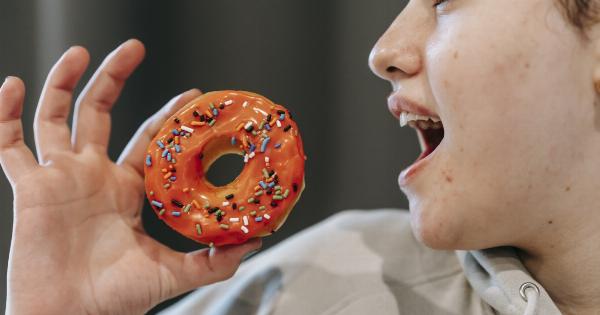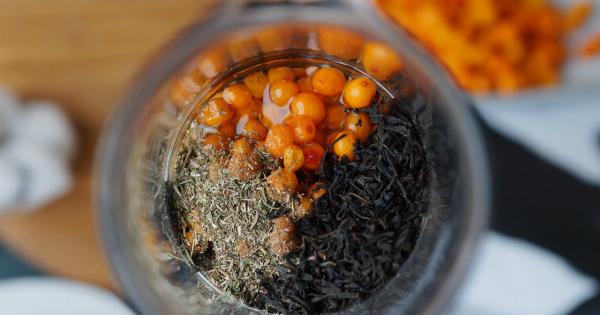Have you ever tasted something sweet and wondered what causes that delicious flavor in your mouth? The sensation of sweetness is caused by the presence of certain chemicals or molecules that stimulate taste receptors on your tongue.
In this article, we’ll explore the science behind sweet taste and what can activate or enhance it.
What are Sweet Taste Receptors?
The sense of taste is caused by receptors in your mouth that detect different flavors.
When you eat something sweet, the molecules from the food or beverage bind to specific receptors on the tongue, which send neural signals to the brain, indicating a sweet taste.
There are several types of taste receptors on the tongue that are responsible for detecting different flavors such as sweet, salty, sour, bitter, and umami.
The receptors for sweetness are called T1R2 and T1R3, and they work together to produce the perception of sweetness.
What are the Types of Sweeteners?
Sweeteners are substances that provide a sweet taste and often used to enhance the flavor of food and beverages. These can be natural or artificial, and they are classified into four categories:.
Natural Sweeteners
Natural sweeteners are derived from plants or fruits and are often used as a sugar alternative. They include:.
- Stevia – extracted from the leaves of the stevia plant and is 200-300 times sweeter than sugar.
- Honey – a natural sweetener that comes from bees, contains antioxidants, and has some antibacterial properties.
- Agave nectar – a syrup derived from the sap of the agave plant, often used in baking and to sweeten drinks.
- Maple syrup – a natural sweetener made from the sap of maple trees and is commonly used in pancakes and waffles.
- Fruit juices – can be used as sweeteners in baking and cooking, but may have a stronger flavor.
Artificial Sweeteners
Artificial sweeteners are synthetic compounds developed to provide a sweet taste without the calories. These include:.
- Saccharin – developed in the late 1800s, 300 times sweeter than sugar, and commonly used in diet sodas and other beverages.
- Aspartame – a combination of two amino acids, 100-200 times sweeter than sugar, and often used in diet drinks and chewing gum.
- Sucralose – made from sugar, 600 times sweeter than sugar, and used in many processed foods and drinks.
- Acesulfame potassium – 200 times sweeter than sugar, often used in sugar-free gum, and can have a bitter aftertaste.
- Neotame – similar to aspartame but is 7,000-13,000 times sweeter than sugar and considered safe for consumption.
Sugar Alcohols
Sugar alcohols are a type of carbohydrate that provides a sweet taste but with fewer calories than sugar. These include:.
- Xylitol – found in fruits and vegetables, used as a sugar alternative in chewing gum and other products, can have a laxative effect in large amounts.
- Erythritol – made by fermenting glucose, often used in sugar-free candy, and has no glycemic impact.
- Maltitol – commonly used in sugar-free foods and products, can cause bloating and digestive discomfort in some individuals.
Glycemic Index and Sweetness
The glycemic index is a measure of how quickly a food raises blood sugar levels.
Foods with a high glycemic index can cause insulin spikes, while those with a low glycemic index are metabolized more slowly and have a less significant impact on blood sugar levels.
Sweeteners can have different glycemic indexes, with some causing a more significant increase in blood sugar than others. Stevia, for example, has a glycemic index of zero, while sugar has a glycemic index of 65.
Understanding the glycemic index of different sweeteners can help individuals make healthier choices for their diets.
Why is Sweet Taste Linked to Comfort?
Many people find sweet flavors comforting, and there may be a biological reason for this. Sweetness activates the reward center of the brain, which releases feel-good chemicals like dopamine.
These chemicals create a sense of well-being and pleasure, leading to the association of sweet flavors with comfort.
Additionally, many cultures serve sweet foods for special occasions or celebrations, further solidifying the association of sweetness with positive emotions and experiences.
Sweet Taste and the Brain
The sensation of sweet taste involves a complex interaction between taste receptors on the tongue and the brain.
When sweet molecules bind to T1R2 and T1R3 receptors, they send signals to the brain’s gustatory center, which is responsible for processing taste information.
The brain then integrates this information with other sensory input, including smell, texture, and temperature to form a complete perception of flavor.
This is why food tastes different when our nose is congested or when it’s served at different temperatures.
The Bottom Line
Sweet taste in the mouth is caused by the activation of taste receptors on the tongue, which bind to sweet molecules.
There are various types of sweeteners, including natural and artificial, which can be used to enhance the flavor of foods and beverages, but may have different glycemic indexes. Sweetness is often associated with comfort and positive emotions, and determining the right sweetener for your diet can help you make healthier choices.



























